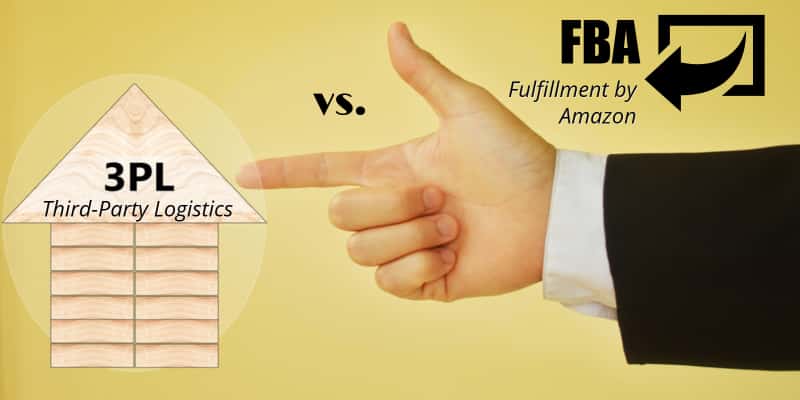FBA vs. 3PL: Notes from the CPG Industry on Which to Choose for Order Fulfillment
The question of FBA vs. 3PL – or Fulfillment by Amazon vs. a third-party fulfillment partner, to be complete – is often skewed by brand recognition.
Everyone knows about Amazon's reach and influence by now, so it’s easy to assume that means they’ll provide the best experience for your company and clients.
In reality, there are many downsides to moving your orders with Amazon, some of which we’ll cover in this article.

Amazon or Third-Party Fulfillment: Notes from the CPG Sector
As in years past, representatives from the consumer packaged goods sector (CPG) recently convened a day-long industry summit that brought together brand owners, suppliers, and contract packagers to discuss challenges and opportunities in an increasingly divergent marketplace.
Capacity CEO Jeff Kaiden provided the opening keynote speech at the recent CPG industry summit, organized in Chicago, IL by Frain Integration and the Contract Packaging Association.

Some of the key takeaways from his presentation were:
- CPG brands would be well advised to redouble their efforts to sell directly to their customers via e-commerce channels other than Amazon.
- Margins are typically higher for direct-to-consumer (D2C) online sellers, while they also retain greater control of product testing and promotions.
- Creative brands can do much more – and open up more opportunities – when they look beyond FBA and find other ways to reach e-commerce customers.
Inevitably, choosing this path can be daunting.
Nowadays Amazon has its tendrils in almost every business sector you can think of, offering its clients unprecedented access and features. Often, however, those solutions come in a one-size-fits-all package that smaller brands are in no position to negotiate. This lacks nuance and can feel manipulative, as highlighted by the company’s recent suggestion to accept its more frequent shipping option.
He’s the first to admit that opting for an e-commerce channel other than Amazon, who practically invented e-commerce as we know it today, is not without its challenges. They own the space, and they’re tough. But by going through Amazon, “they get the margin, not the CPG,” said Kaiden.
One option is to take a more direct-to-consumer approach. “CPGs should put up their own Web site where consumers can find their products and then engage with a third-party logistics firm to handle fulfillment,” said Kaiden.
The benefits to CPGs from a more direct approach to consumers include:
- Improved margins
- More opportunities for sampling, both targeted and untargeted
- Better control over promotional events and special geographic test marketing
FBA vs. 3PL: What About Fulfillment Technology?
With its position as the leading ecommerce platform in many countries and intense focus on robotics through its Kiva division, Amazon understandably dominates the conversation around modern fulfillment technology.
However, this is another area in which 3PL providers can provide a similarly advanced solution, with the added bonus of more flexible delivery.
Going back to the Frain conference, technology was at the forefront of the discussion. Even without Amazon involved, fulfillment tech associated with third-party fulfillment is getting stronger every day, as reported by Packaging World below:
Attendees were impressed by the portion of Kaiden’s presentation where he showed the level of automation his own 3PL firm, Capacity, has been able to bring to an e-commerce order fulfillment process.
“Lighted-batch-cart” picking and “put-to-light” packaging technologies—where clever use of lighting helps pickers and placers visualize where items need to come from and where they need to go–have greatly reduced the amount of time required for Capacity employees to fulfill orders.
Showing great potential for even greater efficiency are collaborative robot applications now being explored by Capacity, chiefly in the area of remarkable end-of-arm tooling designed by RightHand Robotics.
Also on display were videos of our smart vision technology, which removes the need for bar codes. It introduces the ability to scan multiple items simultaneously, as a result of item recognition algorithms originally developed for Israeli missiles.
Inevitably, every fulfillment solution out there comes with advantages and disadvantages, depending on your business. There is no rarely a single perfect solution, but it pays to shop around and consider which option is going to give you the most customized and flexible solution for your company.
In terms of FBA vs. 3PL, this lack of flexibility can prove to be Amazon’s Achilles’ heel.
Always consider the costs of having to fall in line with FBA requirements before the brand name and vast reach of the company overshadow any negatives.
Most retailers benefit from a customized mix of fulfillment services, designed around their business needs to reduce costs, maximize sales, and deliver the best possible customer experience.
There are times when FBA will be the right option, but 3PL fulfillment is a strong competitor, often with greater ability to meet the specific needs of you and your customers.